Software Tour
Load types and
combinations
LUSAS Civil &
Structural provides a comprehensive range of general loading types to
cater for most circumstances. Envelope and load combination facilites
help you get the most from your results.
Structural, prescribed
and thermal loads are feature based loads that are assigned to the
model geometry and are effective over the whole of the feature to
which they are assigned. Discrete loads are feature independent.
Variations in loading can be applied to all feature load types
according to the feature on which they have been assigned
General load types
- Structural loadings
include gravity, concentrated, distributed, face, temperature,
stress/strain, and beam loads.
- Variations in
loading can be applied to all feature load types according to the
feature on which they have been assigned.
- Specify initial
displacements, velocity or acceleration using prescribed loading
options.
- Use discrete loads
to distribute a loading pattern over full or partial areas of the
model independent of the model geometry.
- Define compound
loads (to define load trains) from a set of previously defined
discrete loads and assign to a model as one loading.
- Use thermal loads to
describe temperature or heat input for a thermal analysis or
coupled structural / thermal analysis.
- Apply variations in
loading to all feature load types according to the feature on
which they have been assigned.
Prestress and
post-tensioning loading
Prestress /
post-tensioning in LUSAS is
suitable for beams, slabs and volumes, and for ceratin design
codes can incorporate time-stage
with creep and shrinkage. LUSAS calculates equivalent nodal loading due
to any tendon prestressing or post-tensioning and assigns these forces
automatically to beam, shell, or solid elements of a model
for a chosen loadcase or set of loadcases. Span-by-span, progressive
placement, balanced cantilever and incremental launching time staged construction methods are
supported.
Design codes
supported include:
- AASHTO
LRFD 2nd Edition
- AASHTO
LRFD 5th to 7th Edition
- BS5400-4:1990
- DD
EN1992-1-1:1992 Eurocode 2
- EN
1992-1-1:2004 Eurocode 2
- JTG
D62-2004
|
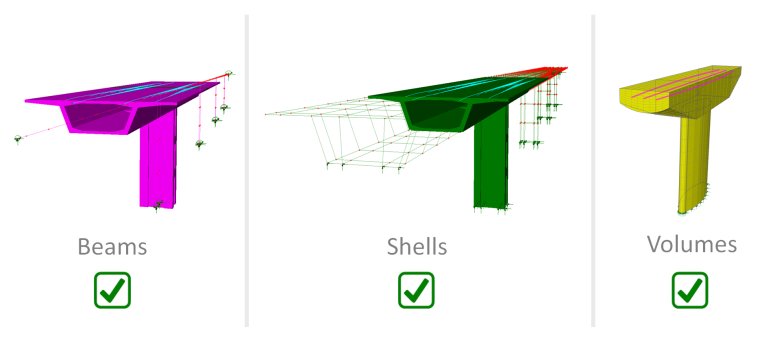
|
|
Beam (line),
shell (surface) and solid (volume) modelling of concrete is
supported. |
In summary:
- Define tendon profiles and
view the developing tendon shape in real-time as it is being defined,
or copy and paste data from a spreadsheet. Tendons can also be
generated by selecting lines, arcs or splines that are defined
or imported into LUSAS Modeller. Manual definition by
coordinates in 3D space or by defining coordinates in two
2D planes is supported.
- Locally defined tendon profiles can be used
anywhere in the model and any number of times.
- Define tendon
properties and values/settings relating to instantaneous and
time-dependent losses.
- Elastic
shortening due to stressing of other tendons according to the selected
design code or user-defined percentage losses is taken into effect.
Time dependent effects can also be considered.
- Simply assign the
tendon loading by dragging and dropping it onto selected line, surface or volume features in a
model for a single or a range of loadcases.
- Produce graphs of
tendon prestress force after time-dependent losses.
-
Add tendon properties, profile, loading, losses and setting-out data
for all tendons assigned to a model to a model report.
|
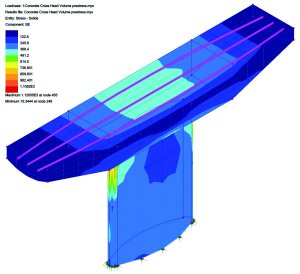
|
|
Envelopes and
Combinations
Basic,
Smart and Code-specific load combination facilities are a key
feature of LUSAS Civil & Structural and allow manual or fully
automated assembly of design load combinations. From these, envelopes,
contour and deflected shape plots, and results graphs can be readily
obtained for any loadcase under consideration.
- Basic load combinations allow
for manual definition of loadcases to be included and load factors
to be used. In situations when superposition may not hold true,
the factored loadcases from these combinations can be used to
create a single loadcase for a nonlinear solution to be found.
- Envelopes of multiple
loadcases provide maximum and minimum results.
- Smart Combinations generate
maximum and minimum results, taking account of adverse and
relieving effects, substantially reducing the number of
combinations and envelopes required.
|
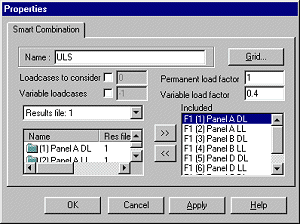
|
Design code load
combinations
Use the
Design Combination wizard to assign a loadtype to a loadcase, envelope or basic combination
for a supported design code. Based on the assignments and settings
made, design code load combinations for those load types are automatically
generated by LUSAS Modeller.
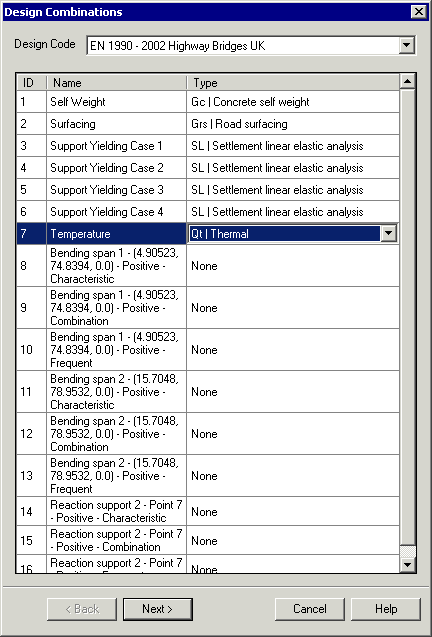 |
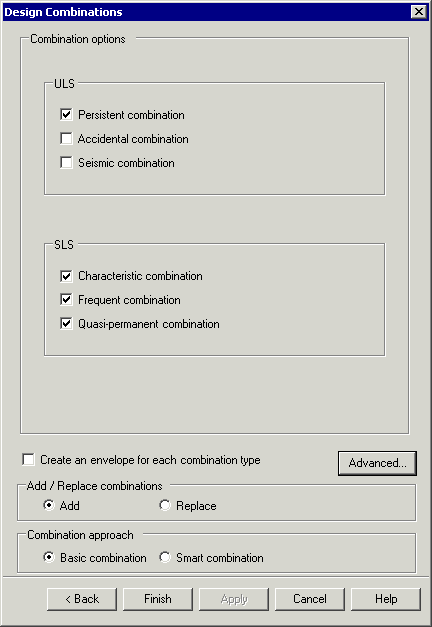
|
|
| Loadcase
/ loadtype definition |
Combination
options
|
|
|
|
Design
combinations for the following codes of practice are supported:
- AASHTO
7th Edition
- AS/NZS
1170
- BD21/01
- BD37/01
- CSA-S6-14
- EN1990
(Buildings) Recommended Values
- EN1990
(Buildings) to Irish National Annex
- EN1990
(Buildings) to UK National Annex
- EN1990
(Bridges) Recommended Values
- EN1990
(Bridges) to Irish National Annex
- EN1990
(Bridges) to UK National Annex
- GB
50009 - 2012
- JTG
D60-2004
|
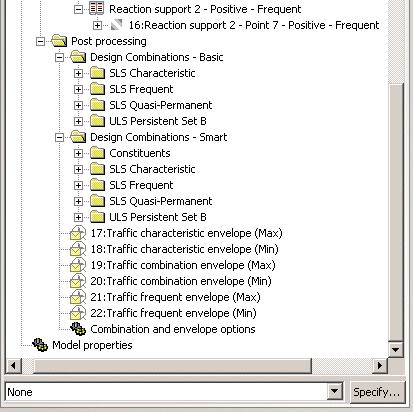
|
Response
spectra
Design code
response spectrum data for the following codes of practice are
currently supported:
- ASCE
7-10 (2010)
- ATC-40
(1996)
- China
GB 50011-2010
- EN1998-1:2004
Design (Horizontal)
- EN1998-1:2004
Elastic (Horizontal)
- FEMA
356 (2000)
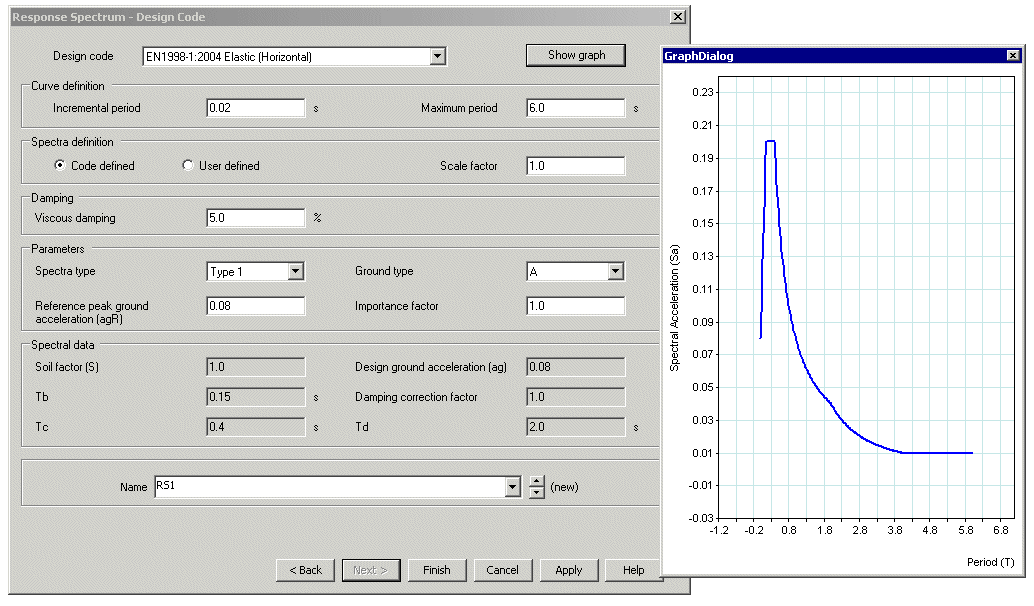
Continue the tour...
Find out more
|
|
Software Information
|